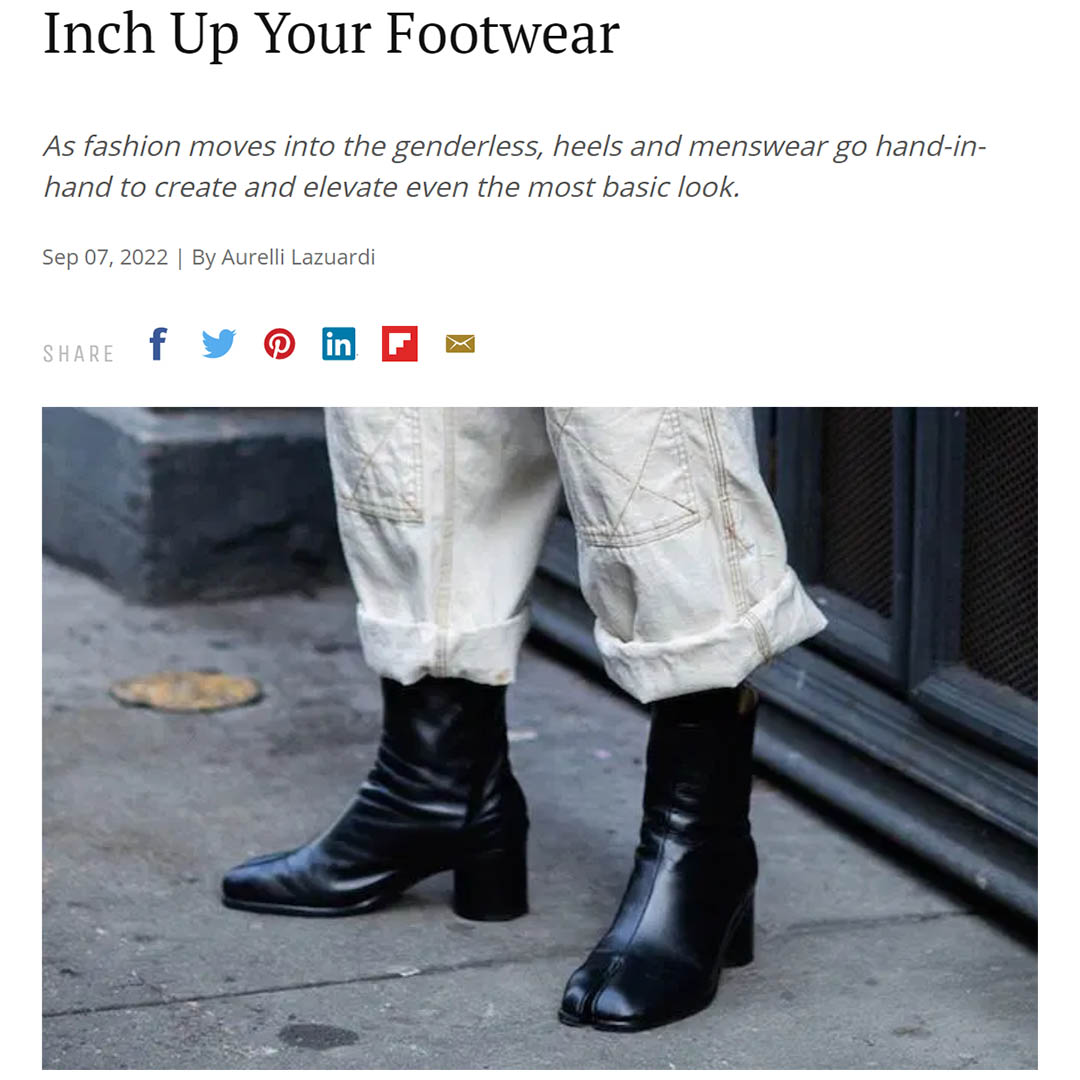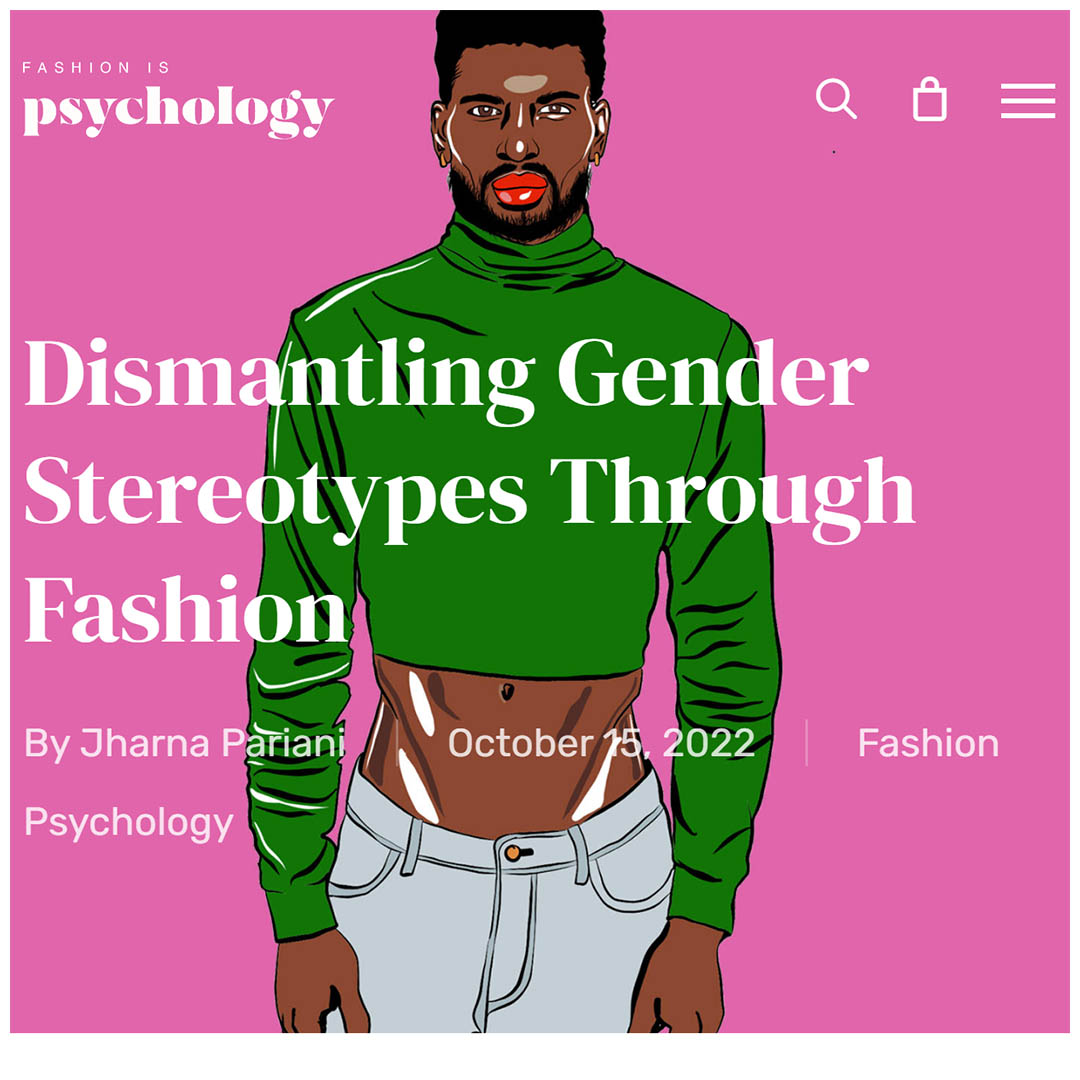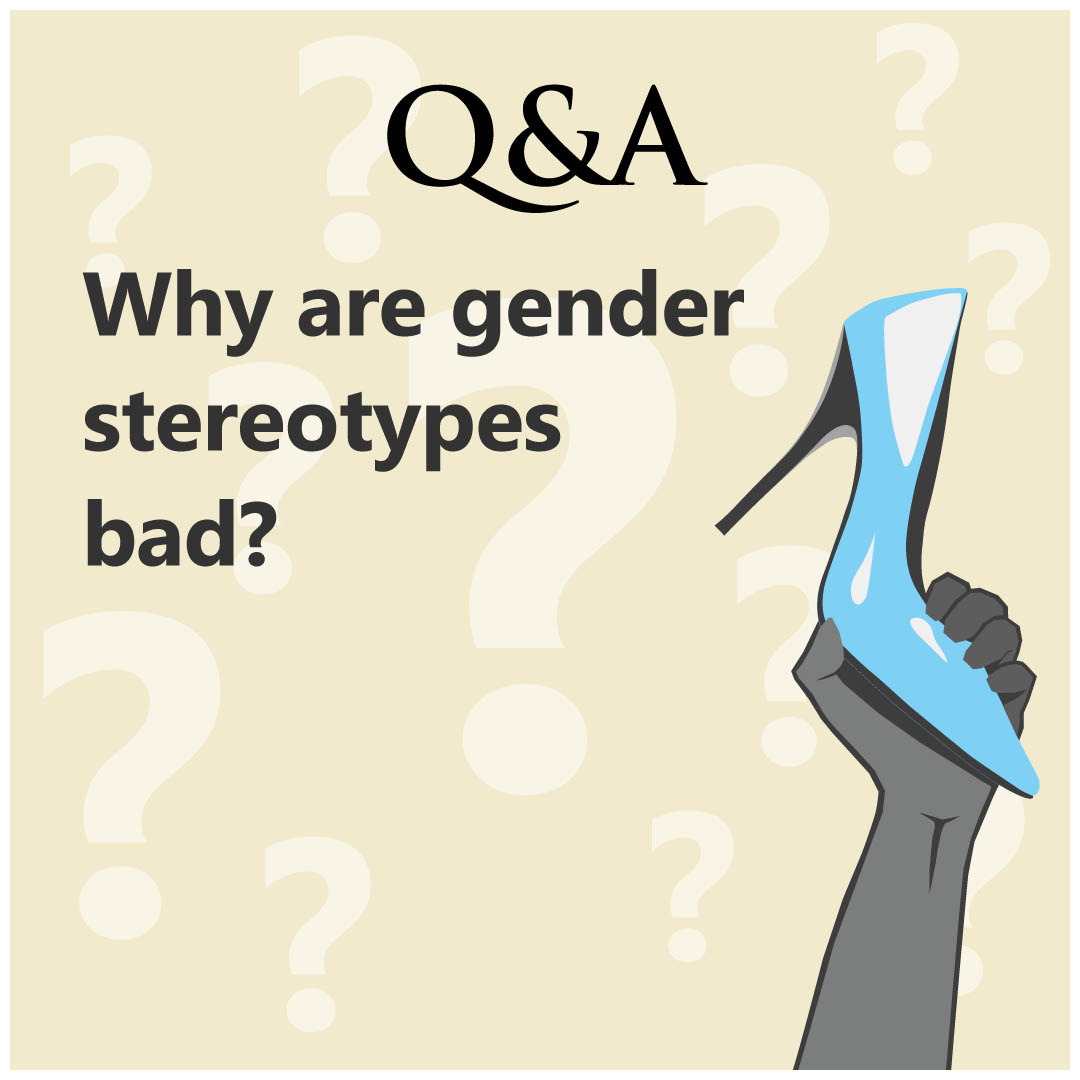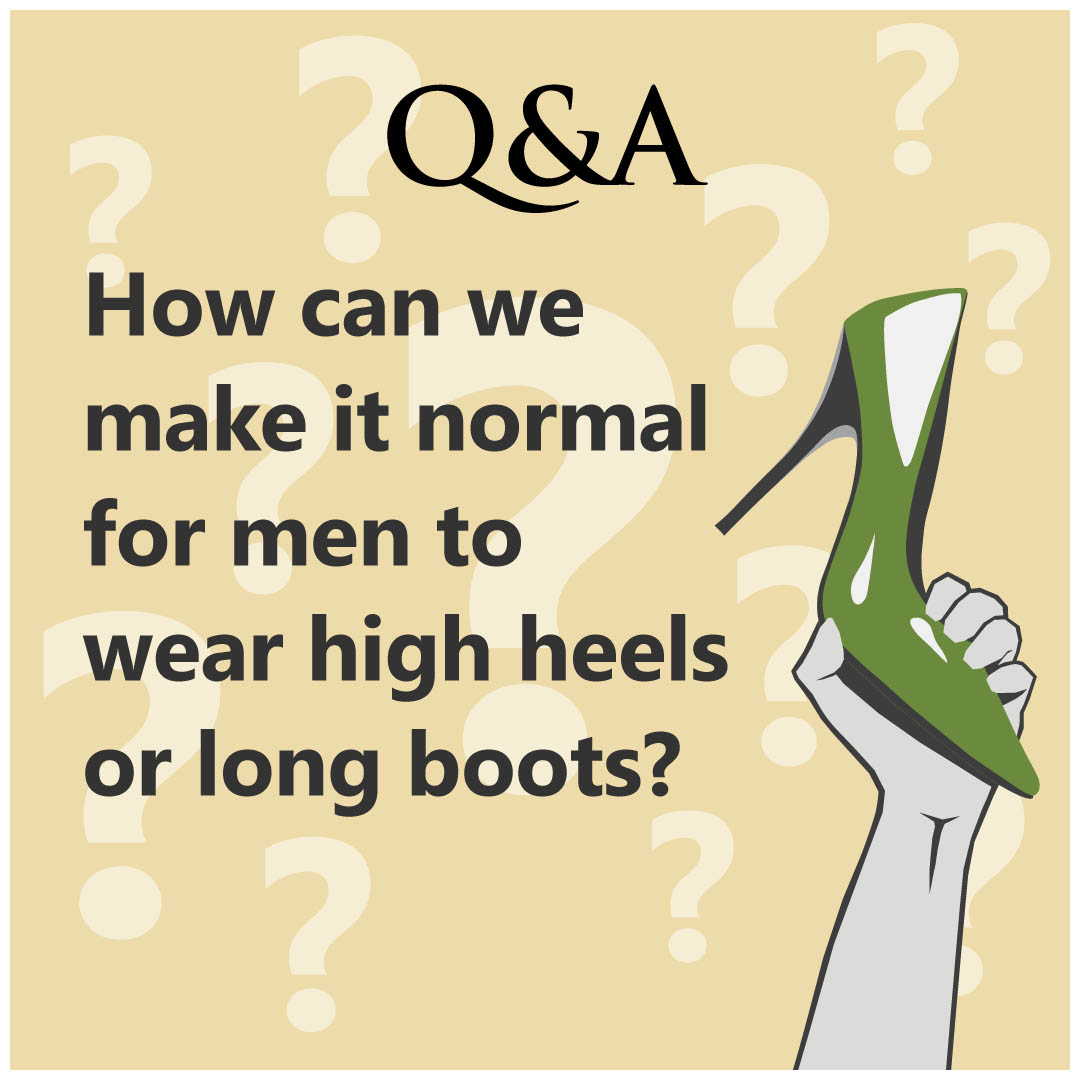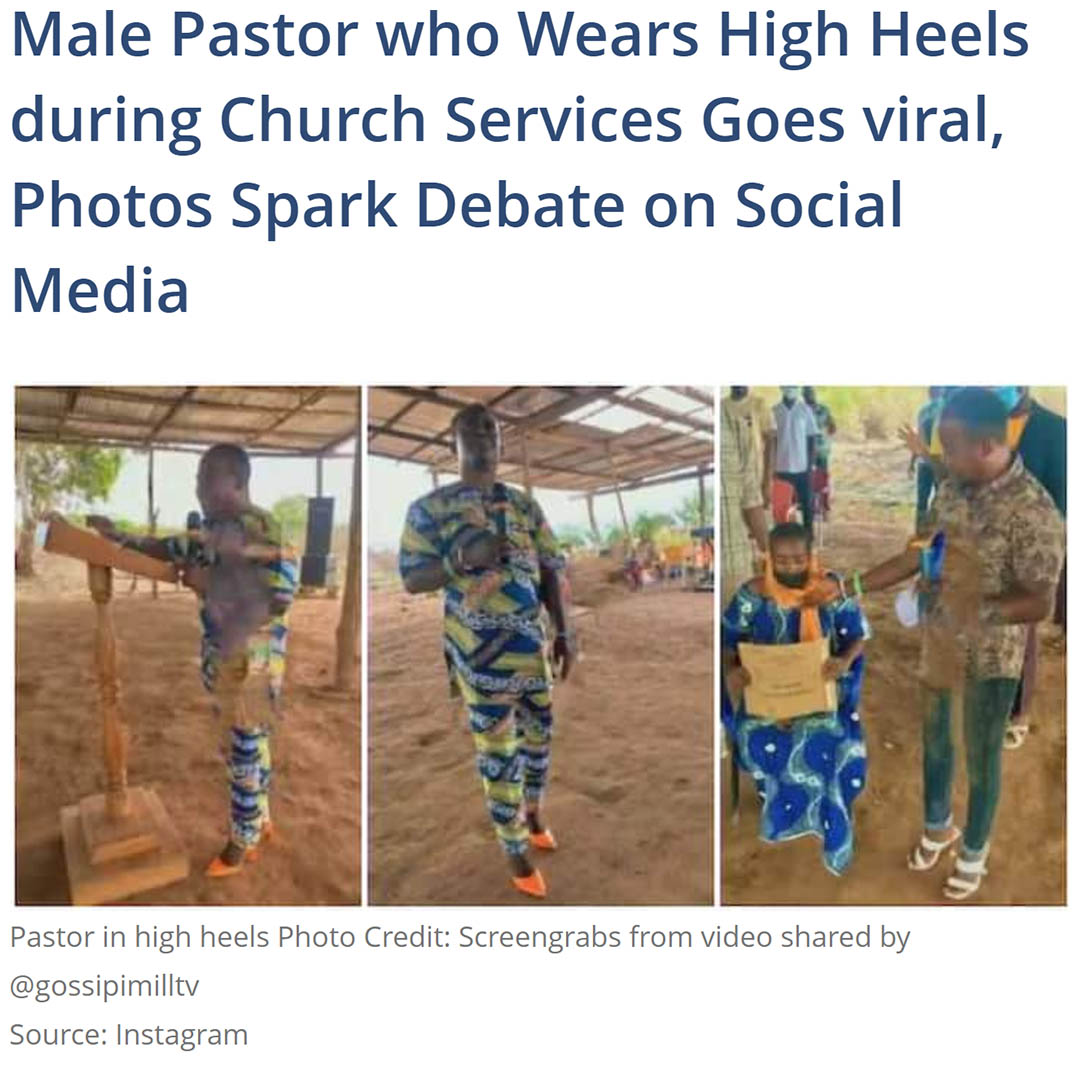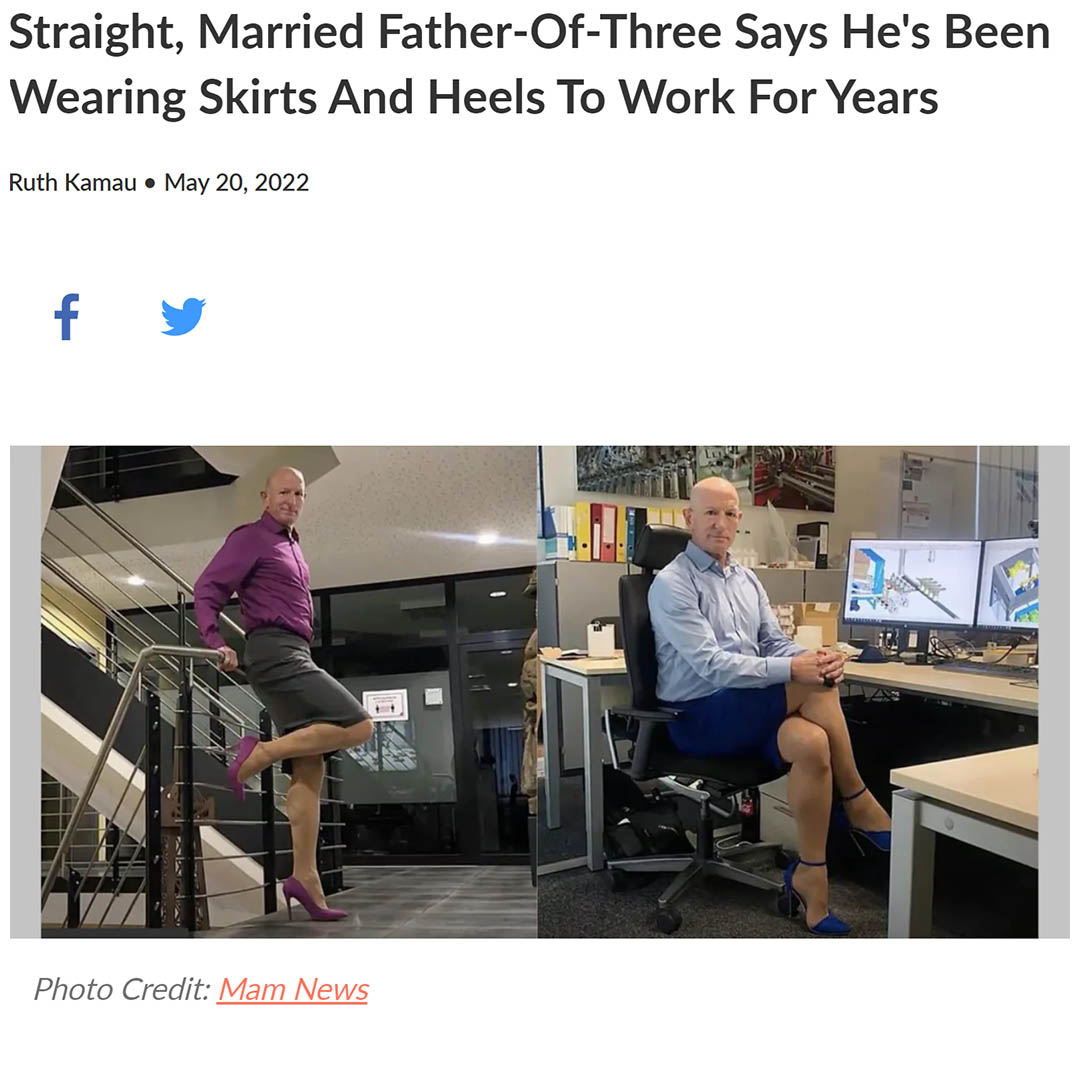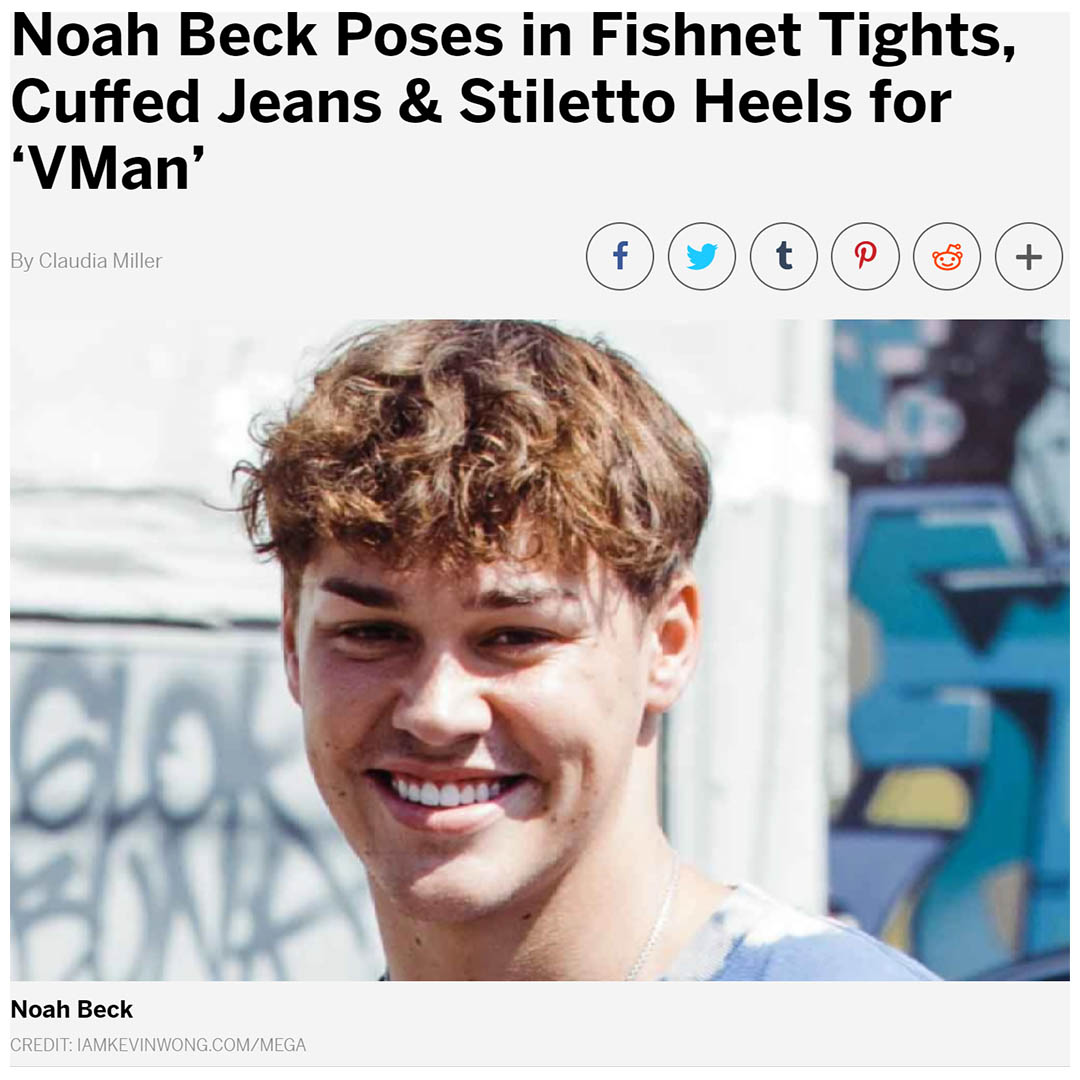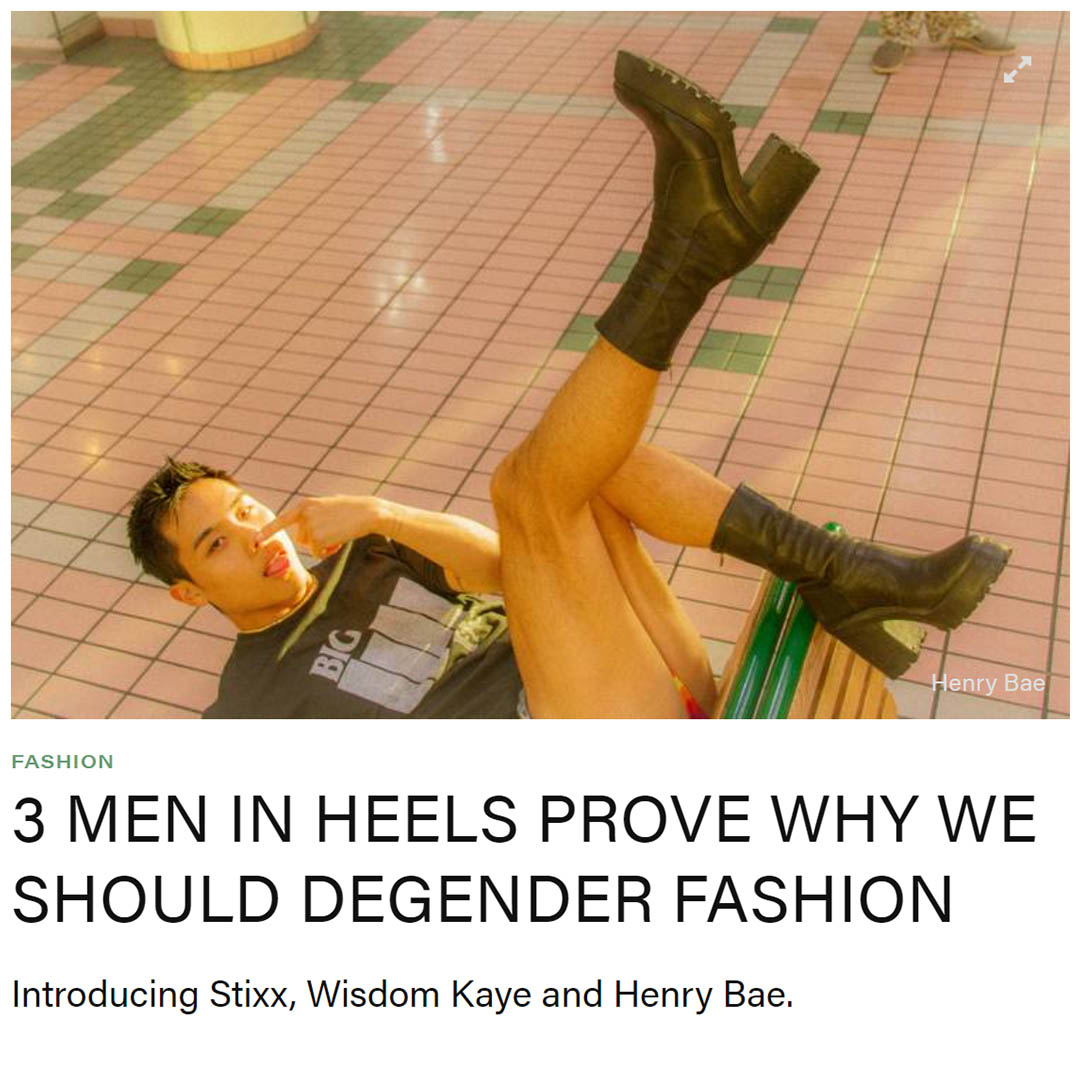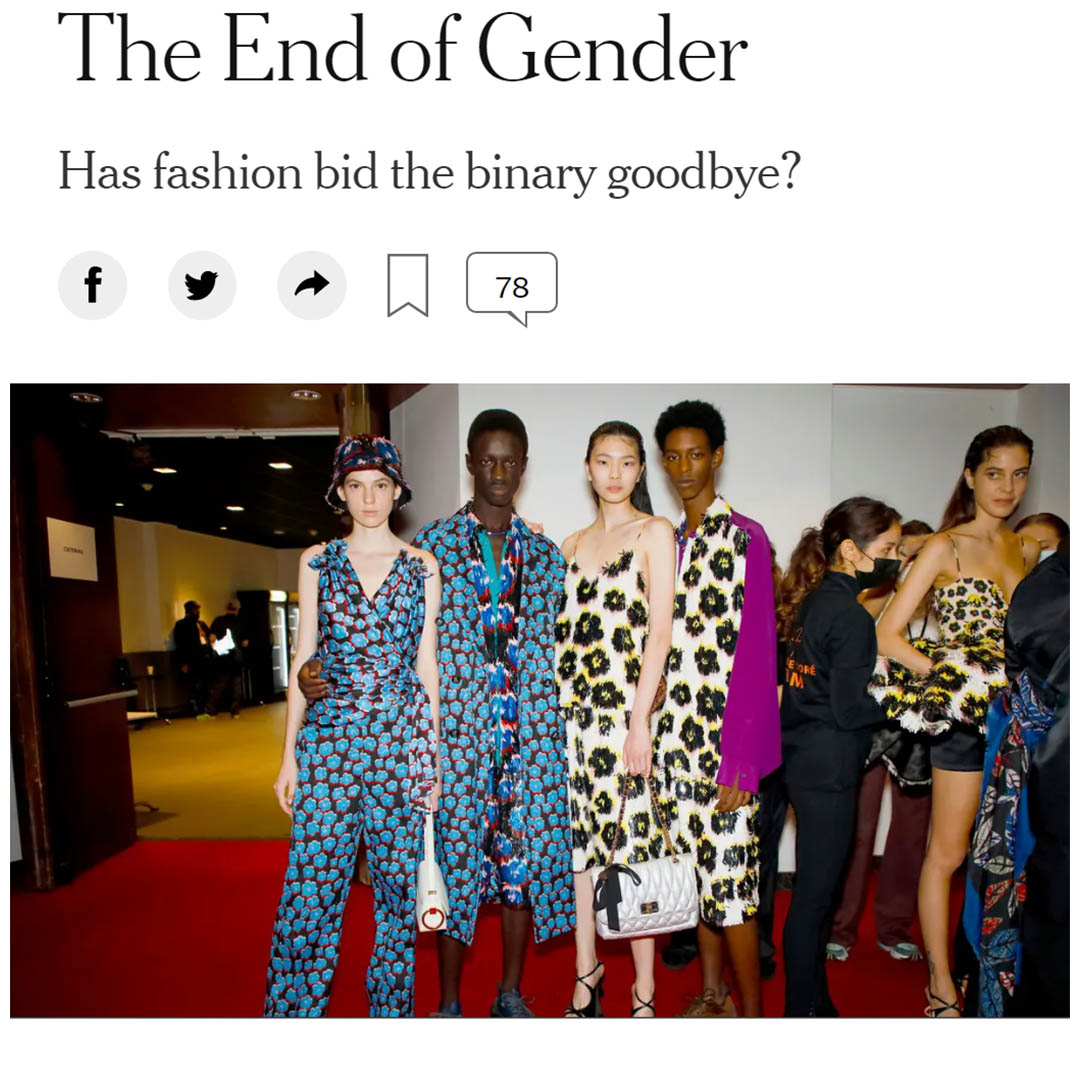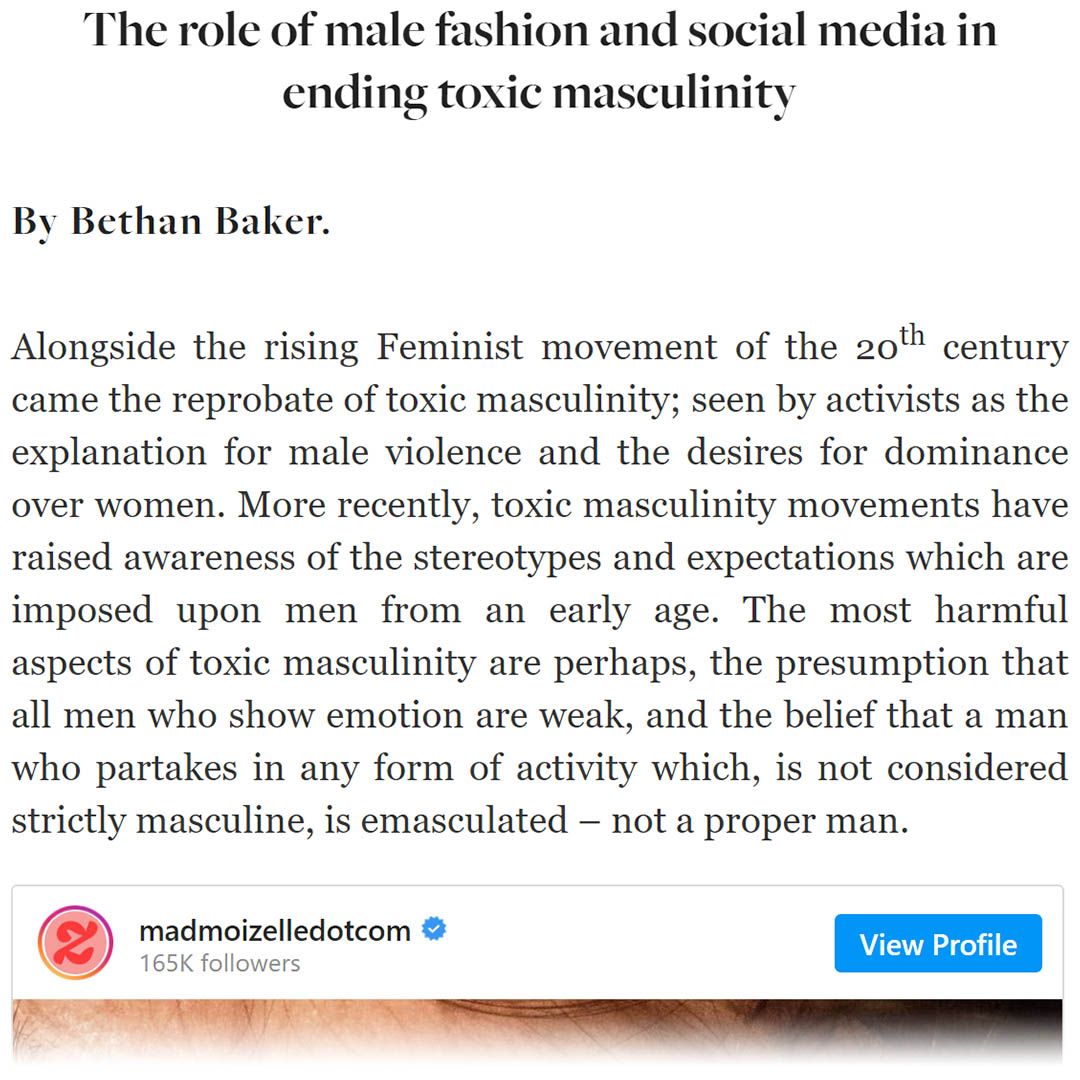Articles tagged with "Social Media"
Style magazine Luxuo sizes up heels for men and how the fashion industry is adapting to more inclusive, genderless fashion.
From the article:
“People who are buying status footwear want to be recognisable,” said Bruce Pask, men’s fashion director at Neiman Marcus. “We’ve been moving in that direction of having more statement-making footwear. That means making bigger, higher and thicker shoes.”
“When I strut down the street in my heels, every part of my being feels right.” Shaobo Han, co-founder of Syro stated. “Wearing heels allows me to connect and embrace my femininity and explore the limits of fashion. I don’t believe that heels should have a gender, it belongs to everyone.”
"Similar to apparel, the declassification of heels as a “woman’s” shoe continues to unfold as clothing become less tied to one’s gender identity and sexuality. As men hit red carpets and magazine covers in gowns, there’s no reason they shouldn’t have a nice pair of heels to accompany them."
Original URL: https://www.luxuo.com/style/inch-up-your-footwear.html
Posted: 3 April 2023
Jharna Pariani writes for Fashion Psychology (@fashionispsychology) website to explore how fashion's influence can be used to dismantle gender stereotypes.
From the article:
"Before the 20th century, women were shamed for cross-dressing in men’s outfits. It wasn’t until the 1920s that women’s clothing finally gained liberation and did away with tightly laced corsets, bustled skirts and puffy sleeves. Women began embracing the androgynous look, also known as ‘La garçonne’, revolutionised by Coco Chanel who paved the way for women’s trousers through her masculine-feminine aesthetic. In 1966, Yves Saint Laurent furthered the cause by introducing ‘Le Smoking’, a tuxedo look for women that became an embodiment of sexual empowerment."
"Women are now revered as ‘power dressers’ for donning sharp suits and enjoy the freedom of easily switching between both masculine and feminine styles. However, men haven’t enjoyed the same level of acceptance and freedom for embracing femininity."
"Gender is no longer just limited to male and female — or pink and blue — but is now a spectrum of non-conforming identities and fashion is beginning to reflect that."
Original URL: https://fashionispsychology.com/dismantling-gender-stereotypes-through-fashion/
Posted: 4 March 2023
Why are gender stereotypes bad?
A gender stereotype is defined as an overgeneralisation of characteristics, differences and attributes of a certain group based on their gender. Typically this is most widely understood in the context of the gender binary of men and women. For example, women are often portrayed as being emotional, caring, nurturing and in need of protection. Men are often characterised as being leaders, rational, career driven and strong. However, a gender stereotype is harmful when it limits the group’s capacity to develop their personal abilities, pursue professional careers and/or make choices about their lives.
Other examples are where assertive women are called “bitches” and “whores”, while men who don’t appear or act masculine are called “sissies” or “wimps” or assumed to be gay, which is a very offensive stereotype in the LGBTQIA+ community.
Gender stereotypes are complex and originate from local culture and traditions. Children learn what constitutes female and male behaviour from their family and friends, the media and institutions including schools and religious bodies. Gender stereotypes can have an adverse effect on all genders, as young people find themselves regularly exposed to messages about how boys and girls should look, behave and play. These socially accepted and often unconscious ideas start to form in infancy.
Gender stereotyping results from unconscious biases held by all of us. Unconscious bias happens when our subconscious makes assumptions about people based on their background or perceived background.
Everyone has unconscious biases. An individual can be unconsciously influenced by a stereotype even if they do not rationally subscribe to it. Becoming aware of our biases and working to counter them is an important way to combat the negative effects of gender stereotypes.
Unconscious bias arises because we have to process vast amounts of information every second. In order to avoid being overwhelmed, our brains have to make assumptions based on previous experience and find patterns to speed up decision making.
However, these assumptions tend to be based on simple characterisations of people such as their age, race or gender. They are communicated through micro-messages such as body language and choice of words. This is more likely to happen when we are stressed or tired, and can cause problems by affecting our beliefs and treatment of others.
As our society moves to a broader construct of what “gender” means, individuals who are stuck in this binary idea of gender have a difficult time wrapping their brains around individuals who do not fit into a strict gender dichotomy, or do not identify with any gender at all.
We are easily thrown in terms of our interactions with others for whom our brain has not been programmed to stereotype to some degree. This is because stereotyping enables us to make sense of the world – at least sometimes. Someone who considers themselves “Gender Fluid,” or “Gender non-conforming,” threatens the stereotypes we are familiar with and for that reason can seem is weird and/or threatening because we can’t even stereotype them.
Mainstream media & advertising have a powerful role to play in defining the gender stereotypes that we perceive, so much so that in June 2019 the Advertising Standards Authority (ASA) in the UK banned "gender stereotypes that are likely to cause harm, or serious or widespread offence" following a review.
The ASA said the review had found evidence suggesting that harmful stereotypes could "restrict the choices, aspirations and opportunities of children, young people and adults and these stereotypes can be reinforced by some advertising, which plays a part in unequal gender outcomes".
"Our evidence shows how harmful gender stereotypes in ads can contribute to inequality in society, with costs for all of us. Put simply, we found that some portrayals in ads can, over time, play a part in limiting people's potential," said ASA chief executive Guy Parker.
Media defines culture, and culture defines change. Individuals may see thousands of advertising messages a day in social media, TV, movies, newspapers or magazines. Those messages matter, because they influence our perceptions of gender.
When it comes to the portrayal of men in media, the fact is that harmful stereotypes do exist about what it means to be masculine, focusing on power dynamics, domination of other men, subjugation of women, violence and aggression. When this gender inequality occurs in the background of gender stereotyping, this is in the most basic sense sexism.
We’ve written new scripts for our daughters about strength and leadership, which are slowly starting to gain representation in media, but what about our sons? What do we want to redefine about their future manhood? New definitions can emerge, though they are often in conflict of our understanding of the world through existing stereotypes. The quantity and quality of advertising messages will largely determine how quickly and how well new roles are defined and adopted by men.
We need to stop seeing challenges to rigid gender roles as a threat, and instead question what’s working for us now and what’s no longer working. The truth is that some gender stereotypes can hold both men and women back from being the best that they can be - and impact our mental health.
Take some time to evaluate the gender stereotypes you frequently encounter and ask yourself whether they truly work to elevate your potential equally alongside others or at their expense because of their gender. Are they genuinely a threat to you or are you simply unconsciously obeying gender stereotype programming which you’ve received since you were born?
When we see a gender non-conforming person in our daily life experience, men in heels being only one example, we should recognise not only the privileges we have in our own position, but the background of inequality within which they have risen through with the mental strength and courage to step outside in the face of gender stereotyping. We may judge them for being "weird", within our own limited experience, or we can regard them as a strong, courageous and individual blueprint for new and positive role models.
Posted: 21 December 2022
How can we make it normal for men to wear high heels or long boots?
1. Be visible
The single most effective thing each and every one of us can do is to be visible. The more people see men in heels, the more it will be normalised.
Every time you venture out you have an opportunity to educate more people and give them a different perspective on how they look at men in what they would normally consider women's clothes. Many people are still unaware of gender issues. Some may find it un-settling at first as we're challenging the status quo... Be kind.
2. Socialise your visibility
Being active regularly on social media is helpful in getting our message about men in heels to "cross-over" into mainstream life. YouTube, TikTok, Pinterest, Instagram and Facebook can all be effective and it's often possible to repurpose content created for one platform on another. Learn about hashtags and use them properly - they are vital to getting noticed. Make hashtags relevant to your post and make them unique to each post. Keep your content focused and on-topic, make it predominantly about your style in heels. Creating a new heels-focussed account is often a good idea if you have pictures of your pet/holidays/what you ate for dinner on your account now. Focus drives follower engagement and retention. If you're not getting (and keeping) the followers you want, make sure you're only posting about topics relevant to their interest.
We can all play our part in social media and in addition to going out there and doing it every day, our community needs us to share our shoe collections, our outfits, our public experiences with whatever level of personal expression we feel comfortable with. Being visible, loud and proud on social media is the key to effecting real change. Resist the temptation to make critical comments when your own profile is empty or has very little content - your voice will be heard louder iand more objectively if you can clearly demonstrate that you walk your talk.
3. Blog it!
Creating a blog website to blog about wearing heels and boots will reach a wider audience than Instagram alone. It can also funnel traffic to your other social media accounts.
You'll probably already have a great deal of content from your social media account (your photos etc), all you need is a little narrative to tell a good story and your website will work well in attracting visitors. Regularly promote your blog on social media.
Some great blogs on high heels and boots can be found at:
4. Ally, don't alienate
Support and ally with other minority groups. Align yourself alongside LGBTQIA+, Feminists and anyone actively gender bending and de-gendering fashion.
5. Support the community
Support each other by making positive, constructive comments on social media, cross-posting and promoting other people's posts and profiles. We'll all achieve more, faster by pulling together as a community.
6. Be gender aware
Be alert to gender-labelling of non-gendered items and call people out on it! The less gendered our world becomes, the better it will be for everyone, us heeled shoe wearers included.
7. Know your history
Educate yourself on men's heel history, fashion and gender issues, it will give you more confidence in yourself and help you develop your style.
8. The fine line between fashion & fetish
Be mindful of sexualisation - don't confuse fashion and fetish. If you have a fetish for anything, that is fine, but keep it private and keep it separate from anything fashion related.
Some things that would also be helpful, but are largely out of our control are
Seeing more men in heels in mass-media Movies, TV series, newspapers and magazines and not just because they are wearing heels, but as matter of fact every day fashion. It's time to change-up the narrative from men in heels being there for shits-and-giggles, because frankly that's getting boring.
Older generations appreciating that the norms that they live by are not the norms that WE live by. We're going to break your norms because they don't have the same value to us as they did for you.
Comments from our readers
We had some great comments on this question posted on our Instagram page for previous posts of this Q&A issue, from both men and women...
"I feel the only way to that is to bring back Cuban heels to mainstream men’s fashion like skinny jeans. I hate to be the bearer of bad news but unless we start with mainstream Cuban heels, high heels will have no chance in men’s mainstream fashion."
"Sadly society have stereotypes about this and wants to quietly shame us for this." ...and we say "Thanks, but we say to hell with gender stereotypes! they are just an out-dated product of the patriarchal society that we live in. The shame is on the people who perpetuate them!!"
"Lead by example. I live in a small town, but still wear heels and/or boots - and dresses or skirts - almost every day. And reactions are almost only positive! ❤️ Even the few, that gave me strange looks, in the beginning are now used to it, and see it as a natural thing, that I dress the way I prefer! 🙏"
"Be confident. And be visible. That makes it fit the norm."
"The more men wear them, the more normal it becomes!"
"Same as guys wearing any formerly masculine style that got appropriated by women...guys just have to get out in them as men, even if "looking" feminine. Clothing does not change one's sex."
"You just do it. I make it normal for myself"
"It will take companies to start making more larger sizes. And market, market, market to men too. Just like Birkenstock big buckle sandals. They stop at size 11. They need to at least go up to 16. I would love to get several of them but no size 14. I wear a size 12 in men's. So that's what it's going to take. We can't wear drag heels and boots all the time. 'Even though I love them' 🙂"
"Normal is majority... more the merrier scenario. Acceptance will return if retail label some high heels as MEN'S. It will take the major retailers to sell them and then the men with the balls to wear them. It will become normal again. If the mullet haircut can return... anything is possible if enough embrace the trend and the trend is marketed"
"As far as I’m concerned it already is, I do it and I consider myself to be normal lol 😂"
"Honestly try to avoid anger when people make comments or laugh. We have to stand tall shoulders back and be proud. No matter what and where your background is."
"You never will, what is normal to one person will not be to the next. You just have to do what feels right for you and if it doesn't please some people that's their problem and if they get over it then that's up to them. You can't truly define normal."
"The behaviour and style of the mainstream is the 'normal'. But minority groups with a goal have the chance for change something. For example women in trousers. For men in skirts, heels, leggings or anything else of female clothing it's the same. We have the right to wear it and we can do. Without Instagram or other platforms in the web, every man in 'wrong' clothes was the only person who do this. With the visibility in the web, every man can see there are any other man doing the same. And the mainstream also see that there more men doing this. And while these men doing and connecting, the trend hunter of the big companies seeing it too. For an example, three years ago ASOS didn't sell swim thongs for men. Actually the do and not only normal thongs, tie side thongs and bikinis for men. Buy what you want, wear what you want with confidence and write reviews at the retailer websites. If the companies see the communication from the customer, they think about developing and offer products for men. ASOS started to sell their shoes in the women department in bigger sizes. They well spotted the trend. It's a crosslinked evolutions starting with our steps which need a little bit self-confidence: 1. Buy the item, with the mindset "it's normal what I'm doing here." 2. Wear/use the item with the mindset "It's normal what I'm doing here." 3. React to weird views or dumb comments/question with the attitude and mindset "I really don't understand you because it's normal what I'm doing here." 4. Ask the employees in the store for assistance when you need and act normal when trying on with the attitude/mindset "It's normal what I'm doing here, so why should I not or should I hide." Sounds easier than it is, but it works and brings you in a positive mood/vibes. Let us start it."
Posted: 7 December 2022
Nigerian news website Legit reports on the male Pastor causing a stir with his high heel wearing style.
"Photos of a male pastor who is used to wearing high heels in the church have caused a commotion on the internet"
"The unidentified pastor is seen in one of the photos ministering on a lectern in his feminine footwear"
"Many people have wondered what may have inspired the man's fashion sense, while others found it weird"
Original URL: https://www.legit.ng/people/1454764-male-pastor-wears-high-heels-church-services-goes-viral-photos-spark-debate-social-media/
Posted: 2 August 2022
Footwear News reports on the latest Jacqeumus campaign, featuring Bad Bunny (@badbunnypr) in a Pink Dress and heels. The multi-talented Puerto Rican is often seen in gender fluid fashion, so it was no surprise to many to see him fronting the Spring 2022 campaign for Jacquemus.
Original URL: https://footwearnews.com/2022/fashion/marketing/bad-bunny-jacquemus-pink-dress-heels-spring-campaign-2022-1203240776/
Posted: 12 July 2022
Opposing Views reports this story on @MarkBryan911 to raise awareness of gender neutral fashion. It's a brief, but interesting story on Mark and his views on wearing high heels to work every day.
Posted: 30 June 2022
GenZ Social Media sensation, Noah Beck caused a stir when he appeared on the front of VMan magazine in Fishnet Tights and Stiletto Heels. As with many features of men in heels, this one also comes with the usual brief, but important history of men in heels.
Also checkout the post of the cover on @NoahBeck's Instagram profile... https://www.instagram.com/p/CL-CCUiHGHR/
Original URL: https://footwearnews.com/2021/fashion/mens/noah-beck-heels-fishnet-tights-jeans-makeup-vman-magazine-1203114717/
Posted: 15 June 2022
Hypebae introduces Stixx (@StixxInTheCity), Wisdom Kaye (@Wisdm) and Henry Bae (@HenryBae), three men who are helping to re-define how we think about fashion today and in particular how heels are crossing the gender divide once again.
Original URL: https://hypebae.com/2022/4/men-heels-inclusive-fashion-gender-lgbtq-rick-owens
Posted: 15 June 2022
ABC News reports in Australia on the debate for the Religious Discrimination Bill where Stephen Jones MP delivered an emotional speech in parliament highlighting the struggles the LGBTQIA community they face every day, highlighting in particular his own son Paddy, who frequently wears gender non-conforming clothes, including high heels.
Original URL: https://www.abc.net.au/news/2022-02-10/paddy-stephen-jones-son-speech/100819064
Posted: 12 June 2022
The New York Times reports on the trend in Spring 2022 fashion shows which is embracing new ideas about gender and its fluidity in fashion. They ask whether we still get freaked out by men in dresses and skirts because we're still holding on to old power structures? and "Is it seen as somehow disempowering for men to have access to classically female clothes? That it somehow... weakens them, since women are supposedly the 'weaker sex'". They conclude that "the balance of power is shifting. These distinctions are just old historical constructs."
Original URL: https://www.nytimes.com/2021/10/11/fashion/the-end-of-gender.html
Posted: 1 January 2022
This article from Fashion North explores how social media is influencing behavior by men towards other men who break current social stereotypes by wearing items not normally associated to them. It highlights how Hollywood stars, such as @TheeBillyPorter are starting to challenge societies' model of male appearance, sexuality & behavior through fashion through their high profile social media presence. Others such as @TryGuys are presenting different ideas about what men can do and building a substantial following along with it!
Original URL: https://www.fashion-north.com/2019/03/12/the-role-of-male-fashion-and-social-media-in-ending-toxic-masculinity/
Posted: 5 July 2021
